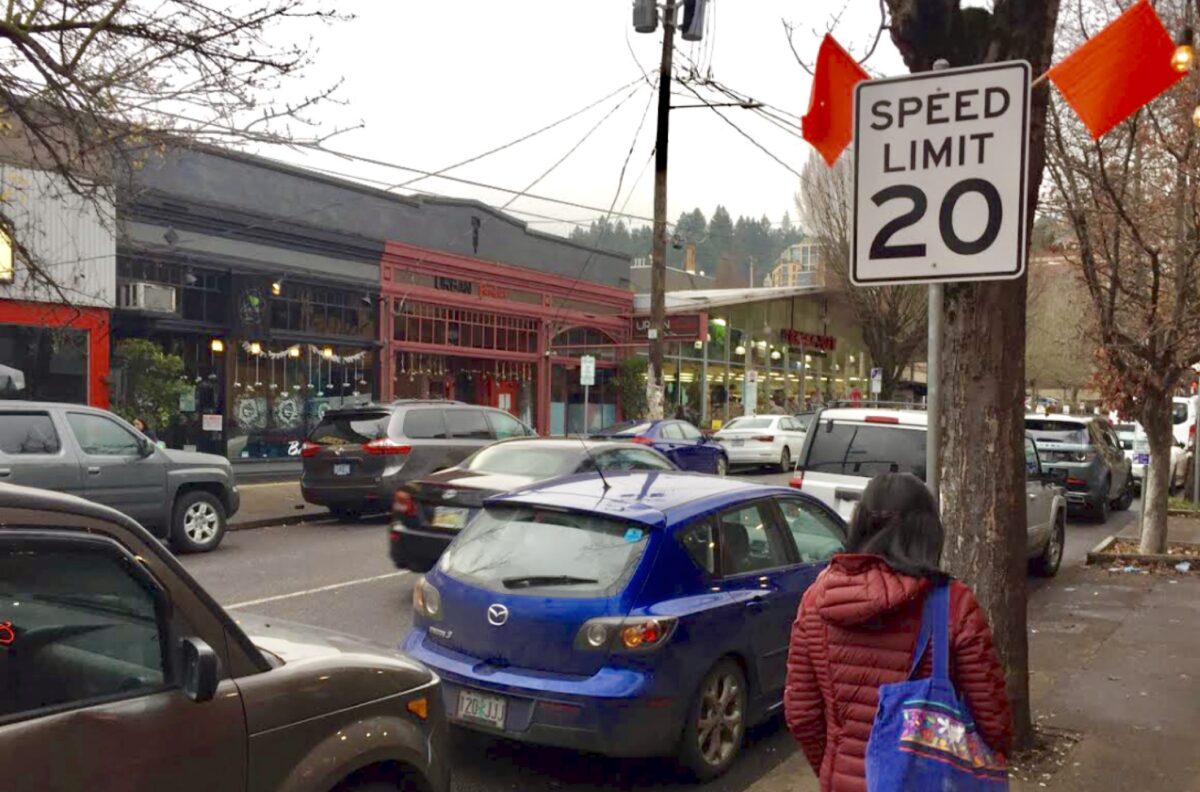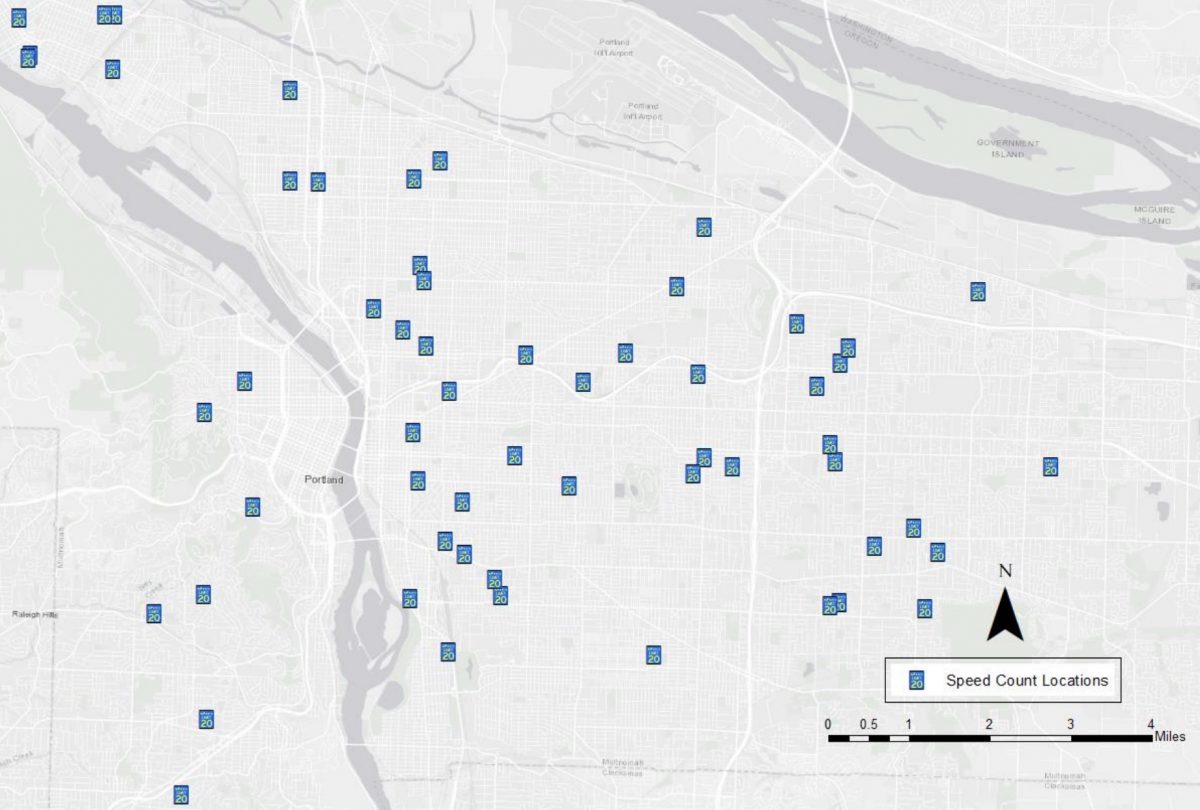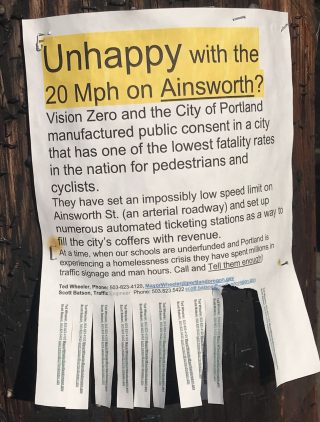
(Photo: Scott Kocher)
“These changes are more meaningful for the Vision Zero speed reduction efforts than the change in average speeding, given the link to crash severity for vulnerable road users.”
— Portland State University research team
The Portland Bureau of Transportation says they’ve moved the line in their war against speeding.
The agency partnered with Portland State University to analyze 58 locations (below) before and after the posted speed limit was changed from 25 mph to 20 mph. After crunching numbers from 214,220 data points, researchers concluded that, “the number of higher-speed vehicles have been reduced.” That’s good news, PBOT says, even though the average speed was “essentially unchanged” from 21.66 mph before the signs were installed, to 21.70 mph after.
Beyond average speeds, the study looked at three specific speed behaviors: exceeding 25, 30, and 35 mph. This is where the results are most significant. In each scenario there was a “substantial reduction” in people going over those thresholds. From the study: “Specifically, there was a 15.9% reduction in odds of observing speeds greater than 25 mi/hr, a 33.6% reduction in odds of observing speeds greater than 30 mi/hr, and a 49.6% in odds of observing speeds greater than 35 mi/hr.” Based on that data, researchers claimed the speed limit reduction, “significantly decreases the odds of observed high speeds.”

The location with the highest reduction of drivers going over 30 mph — a whopping 29% — was Northeast Ainsworth east of 10th. On the other end of the spectrum, the number of people driving over 30 mph after 20 mph speed limit signs were installed went up at 18 of the 58 locations (albeit only a very few).

Advertisement
“These changes [in top-end speeding] are more meaningful for the Vision Zero speed reduction efforts than the change in average speeding, given the link to crash severity for vulnerable road users,” the researchers concluded.

(Photo: Jonathan Maus/BikePortland)
PBOT echoed this sentiment in a statement about the report released today. They said while the average speed remained 22 mph across the 58 locations, the reduction in high speed drivers is a great result. Here’s more from PBOT’s statement:
“Given the powerful negative effect of higher speeds on safety, the National Association of City Transportation Officials recommends that speed limit evaluations heavily weigh ‘high-end’ speeds, or ‘the number or percent of drivers exceeding specific, high-risk speed thresholds,’ to accurately assess the safety impacts of speed limit changes.”
PBOT passed a “20 is Plenty” campaign at Portland City Council in January 2018 after getting it through the Oregon Legislature in the 2017 session. City crews have since blanketed 70% of Portland streets with 20 mph signs.
20 mph zones are just one front in PBOT’s war on speed. They have also lowered speed limits — from 35 to 30 mph, 30 to 25 mph, and so on — on dozens of street segments citywide since 2017. An analysis of those reductions is forthcoming. PBOT also operates eight automated speed cameras (at four intersections) that have had a major impact on slowing people down.
The report on 20 mph signs, Effect of Residential Street Speed Limit Reduction from 25 to 20 mi/hr on Driving Speeds in Portland, Oregon, was written by Jason C. Anderson, Ph.D., Chris Monsere, Ph.D., P.E., and Sirisha Kothuri, Ph.D from the PSU School of Civil & Environmental Engineering. Download it here.
— Jonathan Maus: (503) 706-8804, @jonathan_maus on Twitter and jonathan@bikeportland.org
— Get our headlines delivered to your inbox.
— Support this independent community media outlet with a one-time contribution or monthly subscription.

